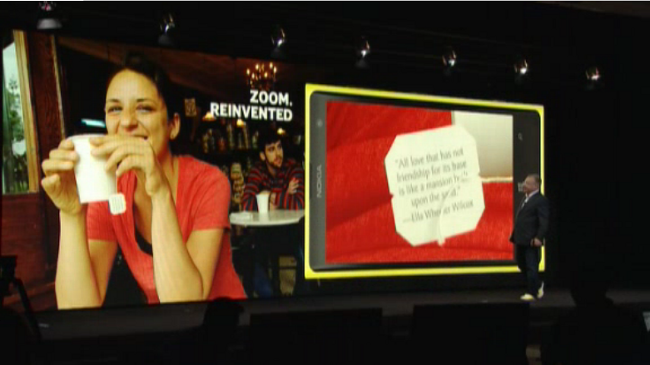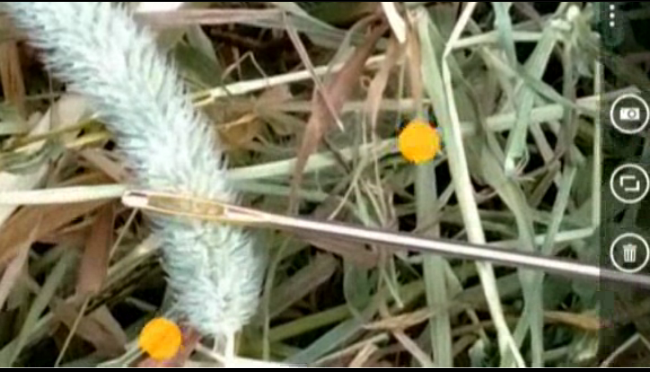Nokia’s Zoom Reinvented event in New York City opened with a focus on photography and continued on in the same way – in fact, it’s almost hard to accept it was a smartphone launch.
When it comes to camera-phone technology, Nokia has a lot to boast about. The company holds about 450 imaging technology patents and over the years has introduced innovations such as Carl Zeiss optics, Xenon flash, floating lens technology for optical image stabilisation and, let’s not forget, the coveted Nokia 808 PureView with a 41MP sensor.
PureView fans were hoping for a smartphone that built on this 41MP model today, and Nokia did not disappoint. The Lumia 1020 comes equipped with an ultra-high-resolution 41MP back-side illuminated sensor capable of capturing 34MP and 38MP image files in 6 x 9 or 4 x 3 aspect ratios, respectively.
Dual capture with oversampling technology
At the same time as capturing these massive image files, the Lumia 1020 simultaneously saves a 5MP version of the image. This image is processed using oversampling technology that generates one pixel from up to seven from the sensor, creating images rich with detail but light in file-size, so easily shared online.
This oversampling technology also applies when shooting video on the 1020, processing up to 1bn pixels per second. Video recording also features lossless high resolution zoom and audio recording has also been enhanced.
Zoom that can find a needle in a haystack
Following tradition, the Lumia 1020 comes with Zeiss optics and six physical lenses, plus optical image stabilization.
As was suggested by an event entitled ‘Zoom Reinvented’, the Lumia 1020 also has amazing zoom capabilities. This is because of the phone’s massive image sensor, and not so much a zoom lens like that found on the Samsung Galaxy S4 Zoom.
This was demonstrated live on-stage by Nokia CEO Stephen Elop, who zoomed in to the image below to read the tag on this lady’s tea bag.

Later, another demonstration zoomed into an image of a haystack to find a needle in there, prompting applause from the crowd.

Because the zoom comes from the wealth of pixels being captured by the sensor, Nokia has managed to keep the device slim, with no need for a protruding lens.
Compatible apps
As can be expected, all these pixels, oversampling and processing will take some time for a smartphone, but Elop assured us that the results will soon help users forget that short delay.
Of course, new camera technologies mean new camera apps from Nokia, and Elop announced Nokia Pro Camera, which give users extensive manual controls to adjust ISO levels, white balance, exposure and even manual focus when shooting on the 1020.
More apps optimising the 1020’s camera capabilities are set to come from CNN, Vyclone, Path, Foursquare, Yelp and Hipstamatic, and Nokia today released a new imaging SDK to encourage further development.
But what about the phone?
Pivoting the 1020 on its unique camera abilities, Nokia ignored much of the smartphone’s finer details. Specs-wise, it ranks around the mid-range with Windows Phone 8, a 1.5GHz dual-core Snapdragon S4 processor, 4.5-inch AMOLED WXGA display, Corning Gorilla Glass 3, 2,000mAh battery, 2GB RAM and 32GB internal memory (necessary for all those 38MP image files).
There’s also a front-facing camera capturing 1.2MP with a wide-angle lens.
The 1020 follows the Lumia colour story and its unibody design is available in black, white and bright yellow. As well as a matching snap-on cover that will enable the device for wireless charging, Nokia also revealed a US$79 camera grip that gives the phone a more camera-like shape and has additional battery power built in.
Release and availability
The Nokia Lumia 1020 will be available first in the US from 26 July (pre-orders start 16 July) for US$300 with AT&T. A global release will follow starting with China and key European markets this quarter.